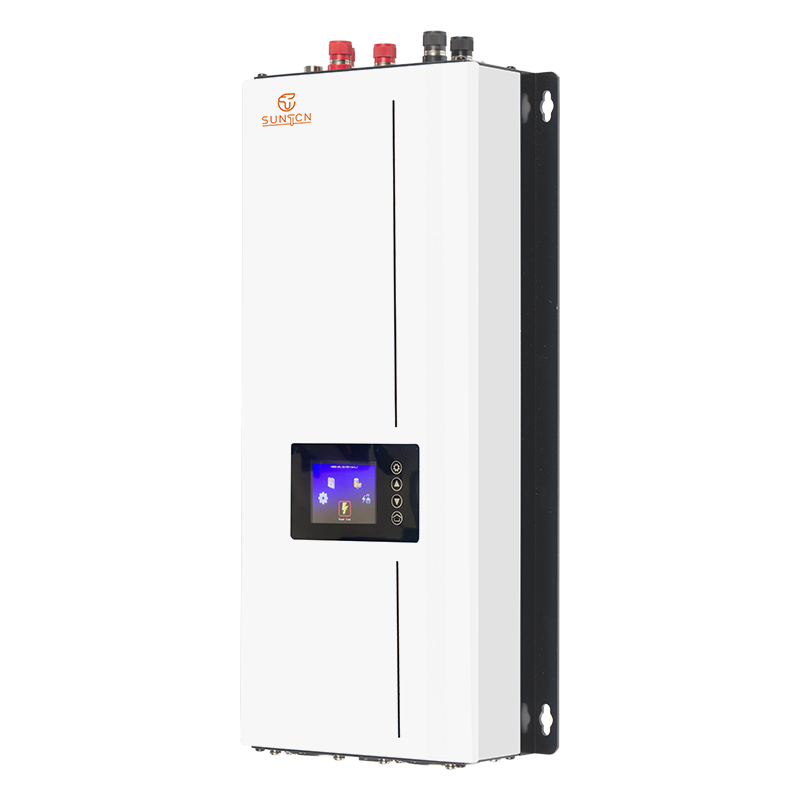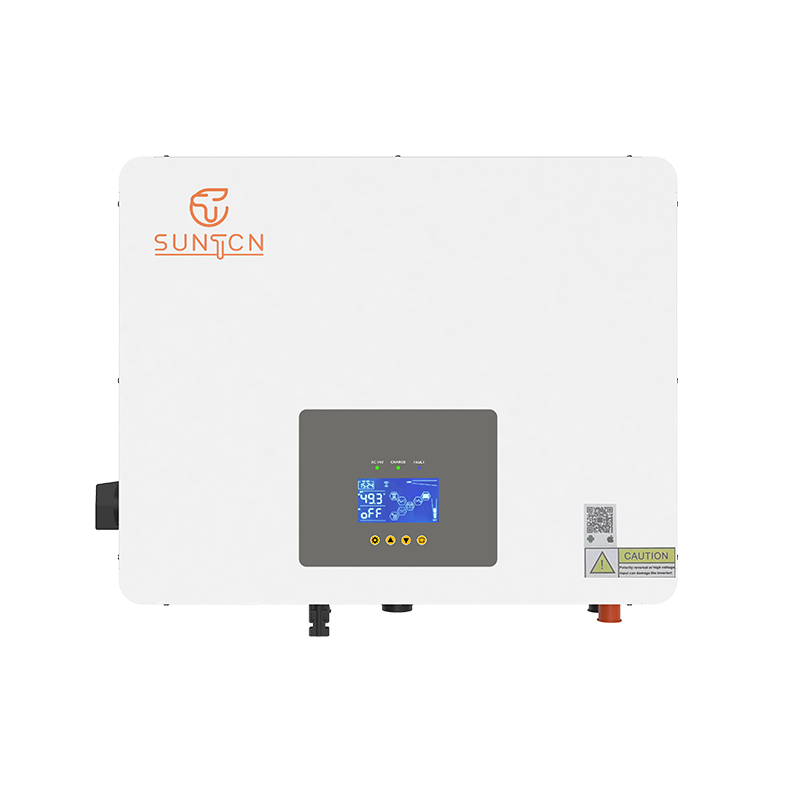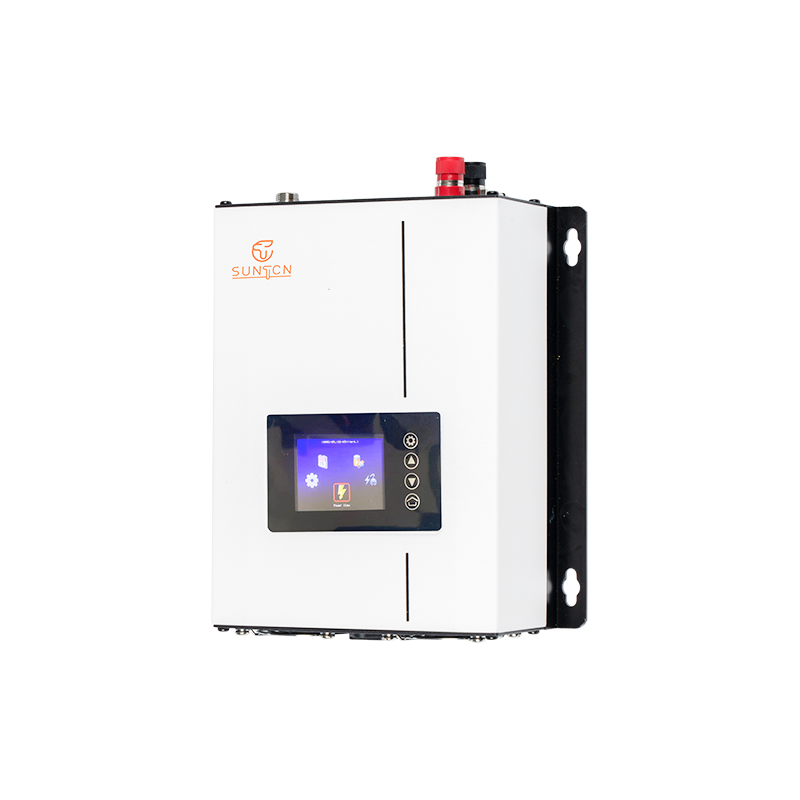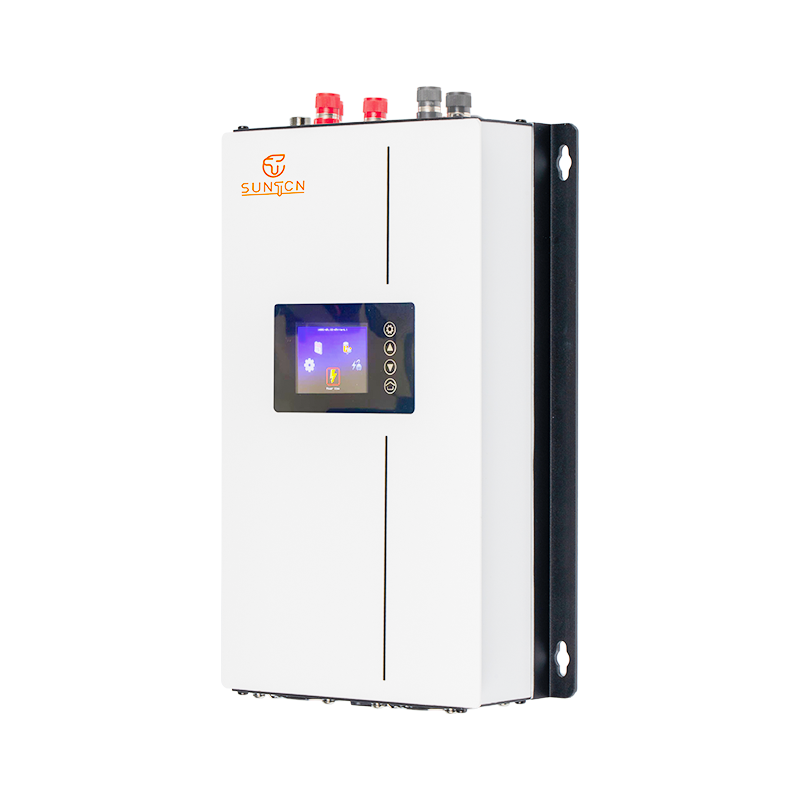Wind Grid Tie Inverter is a key device used in wind power generation systems. It converts the DC power generated by wind power generation into AC power that meets the grid standards, and transmits the power to the grid to achieve clean energy grid-connected power generation. With the increase in global demand for renewable energy and the improvement of environmental awareness, wind power generation is becoming one of the main forms of clean energy, and wind grid-connected inverter, as its core technology, plays an important bridge role.
Wind turbines convert mechanical energy of wind energy into electrical energy, and the generated electrical energy is DC power. The function of wind grid-connected inverter is to convert this part of DC power into AC power and ensure that the converted voltage and frequency match the grid so that it can be smoothly transmitted to the grid. The main functions of the grid-connected inverter include DC-AC conversion, power regulation and grid monitoring to ensure that the power is stably injected into the public grid.
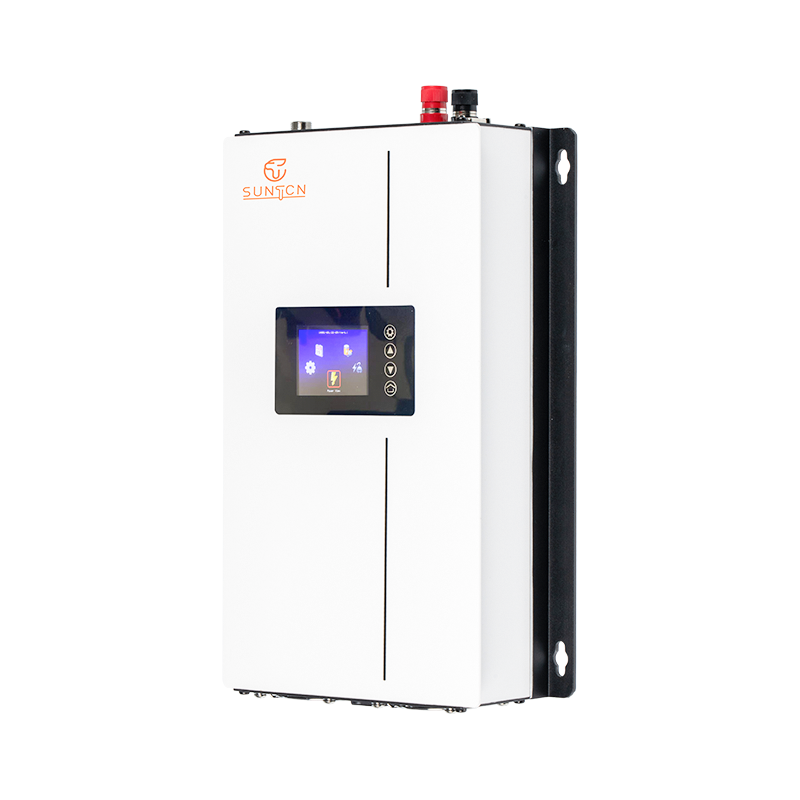
In this process, the inverter will be synchronously adjusted according to the voltage and frequency of the grid to avoid grid voltage fluctuations or frequency deviations, and ensure the safety and stability of grid-connected power generation. At the same time, the inverter also has protection functions, such as overload protection and overvoltage protection, to prevent the power grid and wind power generation equipment from being damaged.
Wind grid-connected inverters have efficient energy conversion capabilities and can maximize the use of the electricity generated by wind turbines. Modern inverters use advanced MPPT (maximum power point tracking) technology, which can track wind speed changes in real time, optimize the output power of wind turbines, and ensure that the wind power generation system always works within the optimal efficiency range.
Wind grid-connected inverters have intelligent control systems that can adapt to various changes in the power grid, such as voltage fluctuations and frequency changes. These inverters can monitor the operating status of the power grid in real time and automatically adjust the output power to maintain the stability of the grid. Modern inverters also have remote monitoring and data logging functions, allowing operators to detect problems and perform maintenance in a timely manner.
Wind grid-connected inverters are not only responsible for the conversion of electrical energy, but also provide a series of protection functions to prevent system failures from affecting the power grid and power generation equipment. Typical protection functions include anti-islanding effect (automatically disconnecting from the grid when the grid is powered off), overvoltage and undervoltage protection, short-circuit protection, etc. These functions ensure the safety of wind power generation systems.
In order to adapt to wind power generation systems of different sizes, wind grid-connected inverters usually adopt a modular design, and different power modules can be flexibly configured according to the power generation capacity. This can not only reduce the initial investment cost of the system, but also facilitate subsequent system expansion and maintenance.
Wind grid-connected inverters can improve the overall efficiency of wind power systems through efficient energy conversion and intelligent control technology, making wind power generation a more economical and feasible energy solution. Efficient inverters can convert more wind energy into electrical energy and reduce system operation losses.
Due to the instability of wind energy, changes in wind speed will affect the output power of power generation. Wind grid-connected inverters ensure the stability of grid-connected power by adjusting the output in real time, thereby reducing the impact on the power grid. The protection function of the grid-connected inverter can also prevent the expansion of grid faults and improve the safety of the power grid.
With the rise of distributed power generation, more and more small wind power systems are used for distributed power generation in homes, communities or industrial and commercial areas. Wind grid-connected inverters provide a convenient grid-connected solution for these small-scale systems, allowing distributed wind power to be flexibly connected to the grid and provide users with green electricity.
The data collection and monitoring functions of wind grid-connected inverters help to achieve the management and dispatch of smart grids. Through real-time data transmission, grid operators can more accurately predict wind power output and optimize power dispatch to improve the operating efficiency of the grid.
Wind grid-connected inverters play a key role in wind power generation systems. They not only realize the efficient conversion of DC to AC, but also provide intelligent control and protection functions, which provide guarantees for the stable operation of the power grid and the widespread application of clean energy. With the development of wind energy technology and the popularization of smart grids, wind grid-connected inverters will be further upgraded and improved to promote the sustainable development of the clean energy industry.

 English
English Español
Español Deutsch
Deutsch
